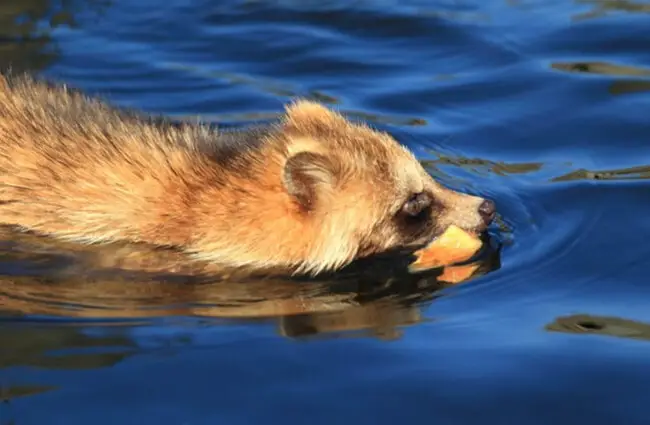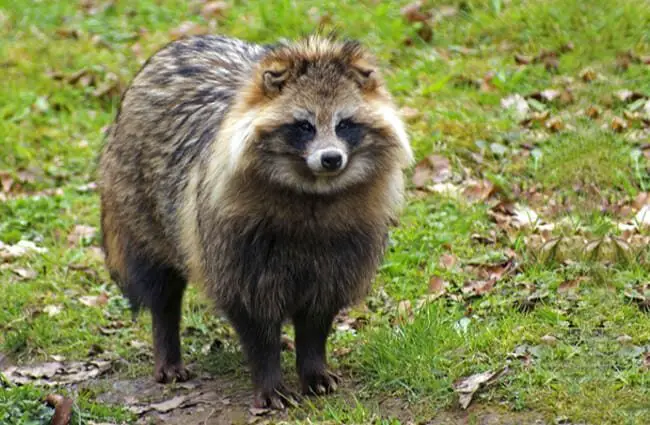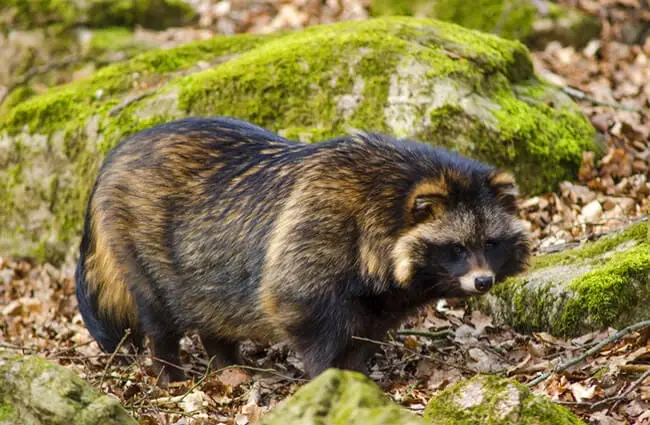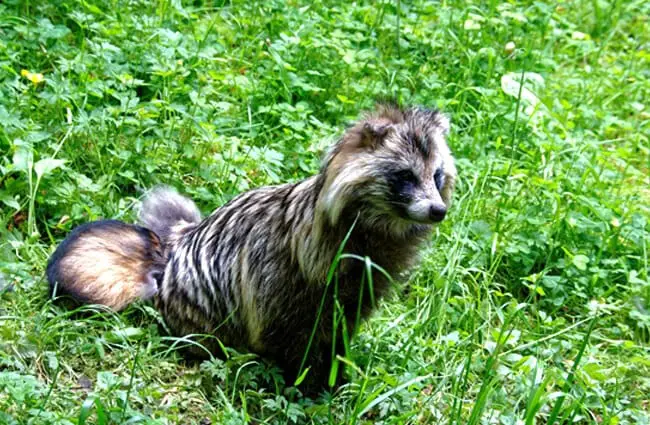Unmasking the Enigmatic Tanuki: A Journey into the World of the Raccoon Dog
Often mistaken for its North American cousin, the raccoon, or even a badger, the Tanuki holds a unique and fascinating place in the animal kingdom and human culture. This captivating creature, a true canine with a distinctive masked face, has inspired folklore, adapted to diverse environments, and continues to intrigue zoologists and nature enthusiasts alike. Join us on an exploration of the Tanuki, delving into its biology, behavior, ecological role, and its enduring legacy in the human imagination.

The Tanuki’s True Identity: A Canine of Distinction
What is a Tanuki?
Scientifically known as Nyctereutes procyonoides, the Tanuki is more accurately referred to as a raccoon dog. Despite its striking resemblance to raccoons, particularly its facial mask and stocky build, the Tanuki is not a raccoon at all. It belongs firmly within the Canidae family, making it a distant relative of foxes, wolves, and domestic dogs. Its common name, “raccoon dog,” aptly describes its appearance, but its genetic lineage places it squarely among the canines.
These medium-sized mammals typically measure between 50 to 68 centimeters (20 to 27 inches) in body length, with a tail adding another 13 to 25 centimeters (5 to 10 inches). Their weight fluctuates significantly throughout the year, ranging from 3 to 10 kilograms (7 to 22 pounds), with individuals often doubling their weight in autumn in preparation for winter. Tanuki possess short legs, a bushy tail, and a thick, shaggy coat that varies in color from reddish-brown to grayish-brown, often with darker markings on the back and legs. Their most distinguishing feature is the dark mask across their eyes, reminiscent of a raccoon, which gives them their common moniker. In the wild, Tanuki can live for 6 to 8 years, while in captivity, their lifespan can extend to 10 to 12 years.

Evolutionary Journey: A Unique Branch of the Canine Family
The Tanuki represents one of the most ancient and basal lineages within the Canidae family. Its evolutionary history is distinct, having diverged from other canids much earlier than foxes or wolves. This ancient lineage is reflected in several unique biological traits, such as its ability to undergo a period of torpor or partial hibernation during harsh winters, a characteristic not typically found in other canids. Genetic studies confirm its unique position, highlighting its long, independent evolutionary path within the dog family. This makes the Tanuki a living testament to the diverse adaptive strategies that have evolved within the canine lineage, offering valuable insights for aspiring zoologists studying mammalian evolution.

Where the Wild Tanuki Roams: Habitat and Distribution
Geographic Range
The Tanuki is native to East Asia, with its historical range encompassing Japan, China, Korea, and parts of southeastern Siberia. However, its story took a significant turn in the 20th century when it was introduced to European Russia for its fur. From there, it rapidly expanded its range across much of Eastern and Northern Europe, establishing populations in countries like Finland, Sweden, Norway, Poland, Germany, and France. This expansion has made the Tanuki a fascinating case study in species introduction and adaptation, relevant for students researching animal distribution.

Preferred Environments
Tanuki are highly adaptable creatures, thriving in a variety of habitats. Their preferred environments include dense forests, woodlands, and mixed forests, particularly those with thick undergrowth that provides ample cover. They show a strong preference for riparian zones, areas near rivers, lakes, and wetlands, as these provide both water sources and abundant food. While primarily creatures of the wild, Tanuki are also known to venture into agricultural lands, suburban areas, and even the outskirts of cities, demonstrating a remarkable ability to coexist with human populations. This adaptability is key to their success across their vast native and introduced ranges.

Finding Tanuki in the Wild: Tips for Animal Lovers
For the dedicated animal lover hoping to catch a glimpse of a Tanuki in its natural habitat, patience and a keen eye are essential. These animals are primarily crepuscular and nocturnal, meaning they are most active during dawn, dusk, and throughout the night. Here are some tips:
- Timing is Key: Plan your excursions for early morning or late evening.
- Habitat Hotspots: Focus on areas with dense vegetation, forest edges, and especially near water bodies like streams, rivers, or ponds.
- Look for Signs: Keep an eye out for their distinctive tracks, which are similar to a small dog’s but often show five toes. Their scat can also be found along trails.
- Quiet Observation: Tanuki are generally shy. Move quietly and avoid sudden movements or loud noises. A good pair of binoculars can enhance your viewing experience without disturbing the animal.
- Respect Wildlife: Always maintain a respectful distance. Never attempt to approach or feed a wild Tanuki.

A Tanuki’s Table: Diet and Foraging Habits
Omnivorous Opportunists
The Tanuki is a true omnivore, a dietary generalist that capitalizes on a wide array of food sources available in its environment. This opportunistic feeding strategy is a major factor in its ecological success and adaptability. Their diet includes:
- Animal Matter: Insects, rodents (mice, voles), small birds and their eggs, frogs, lizards, snakes, and even fish. They are also known to scavenge on carrion.
- Plant Matter: A significant portion of their diet consists of fruits, berries, nuts, seeds, roots, and tubers. They are particularly fond of seasonal fruits like persimmons and wild grapes.
Their foraging behavior involves sniffing out food on the ground, digging for insects and roots, and occasionally climbing low branches for fruits. This diverse diet makes them important contributors to seed dispersal and natural pest control within their ecosystems.
Seasonal Variations and Adaptations
The Tanuki’s diet is highly seasonal. In spring and summer, they consume more animal protein as insects and small vertebrates are abundant. As autumn approaches, their diet shifts heavily towards fruits and berries, allowing them to accumulate significant fat reserves. This pre-hibernation fattening is crucial for their unique adaptation: the Tanuki is the only canid known to undergo a period of torpor or partial hibernation during the coldest months. While not a true deep hibernation, they become much less active, relying on their stored fat to survive periods of food scarcity and extreme cold. This physiological adaptation is a key area of study for aspiring zoologists interested in mammalian survival strategies.
Life Cycle of the Tanuki: Mating, Reproduction, and Family Bonds
Monogamous Mates
Unlike many other canids, Tanuki are largely monogamous, forming strong pair bonds that often last for a breeding season or even longer. The male plays an active and significant role in raising the young, a characteristic that sets them apart from many other solitary or less involved canid fathers. This cooperative parenting strategy is vital for the survival of their offspring.
Breeding Season and Pups
The breeding season typically occurs in early spring, usually from February to April. After a gestation period of approximately 59 to 64 days, the female gives birth to a litter of pups. Litter sizes can vary considerably, but typically range from 4 to 8 pups, though larger litters have been observed. Pups are born blind and helpless, relying entirely on parental care. Tanuki often utilize existing burrows dug by other animals, such as badgers or foxes, or find shelter in hollow logs, rock crevices, or dense thickets to create their dens.
Parental Care and Development
Both parents are actively involved in caring for the pups. The male assists in foraging for food and guarding the den, bringing food back to the nursing female and later to the growing pups. The pups grow rapidly, opening their eyes after about 10 days and beginning to explore outside the den at around 3 to 4 weeks of age. They are weaned at about 5 to 6 weeks and start foraging with their parents shortly thereafter. By late autumn, the young Tanuki are typically independent, though they may remain with their family group until the following spring before dispersing to establish their own territories.
The Tanuki’s Role in the Ecosystem
Ecological Contributions
Tanuki contribute to their ecosystems in several important ways. As omnivores, they play a role in seed dispersal by consuming fruits and berries and then depositing seeds in their scat, aiding in plant propagation. Their diet of insects and rodents also positions them as natural pest controllers, helping to regulate populations of these smaller creatures. Furthermore, as scavengers, they assist in cleaning up carrion, preventing the spread of disease and recycling nutrients within the environment. Students researching ecosystem dynamics will find the Tanuki a compelling example of a generalist species with diverse ecological impacts.
Interactions with Other Species
In their native ranges, Tanuki are prey for larger predators such as wolves, lynx, and large birds of prey like eagles. They often share their habitats with other mesopredators like foxes and badgers. While there can be some competition for food resources with foxes, Tanuki are known to sometimes cohabit peacefully in the same burrows as badgers, demonstrating an unusual interspecies tolerance. In areas where they have been introduced, particularly in Europe, Tanuki can compete with native mesopredators for food and den sites. They also have the potential to act as vectors for diseases, including rabies and sarcoptic mange, which can impact native wildlife populations.
Impact of Introduced Populations
The introduction of Tanuki to Europe has created complex ecological dynamics. While they have successfully integrated into many European ecosystems, concerns exist regarding their potential impact on native species. Their generalist diet and high reproductive rates allow them to thrive, potentially outcompeting native carnivores for resources. Monitoring these introduced populations is crucial for understanding and mitigating any negative effects on biodiversity.
Tanuki and Humanity: Culture, Conservation, and Coexistence
Cultural Significance: The Mythical Tanuki
Perhaps nowhere is the Tanuki more revered and celebrated than in Japanese folklore, where it holds a prominent place as a mythical creature. The Japanese Tanuki is a beloved figure, often depicted as a mischievous, jolly, and somewhat gullible shapeshifter. These legendary Tanuki are said to possess magical powers, including the ability to transform into humans or objects, often using large, magical testicles for various purposes, including drumming, flying, or as weapons. Statues of Tanuki, often adorned with a sake bottle, a promissory note, and a large belly, are common outside restaurants and bars in Japan, symbolizing good fortune, prosperity, and hospitality. This rich cultural tapestry makes the Tanuki a fascinating subject for students exploring the intersection of wildlife and human culture.
In Japanese folklore, the Tanuki is a master of disguise, a jovial trickster who brings good luck and merriment. Its image is deeply woven into the fabric of Japanese tradition, a testament to the animal’s unique charm.
Interaction with Humans: What to Do if You Encounter One
Wild Tanuki are generally shy and reclusive animals. Encounters with humans are relatively rare, and they typically avoid confrontation. If you encounter a Tanuki in the wild, whether on a hike or in a suburban area, it is important to remember the following:
- Observe from a Distance: Admire the animal from afar. Do not attempt to approach, touch, or corner it.
- Do Not Feed: Feeding wild animals can lead to them losing their natural fear of humans, which can be detrimental to both the animal and people.
- Keep Pets Leashed: If you are with a dog, keep it leashed to prevent any potential conflict.
- Report Concerns: If you observe a Tanuki that appears sick, injured, or unusually aggressive, contact your local animal control or wildlife authorities.
For hikers, simply enjoying the sight from a distance is the best course of action. Tanuki are not typically aggressive towards humans unless they feel threatened or are rabid, which is rare.
Conservation Status and Challenges
Globally, the Tanuki is classified as “Least Concern” by the IUCN, indicating that its populations are stable and widespread. However, local populations can face threats from habitat loss due to urbanization and deforestation, roadkill, and historical hunting for their fur. While the fur trade has diminished in many regions, it still exists. In introduced European populations, management strategies are sometimes implemented to control their numbers and mitigate potential impacts on native ecosystems. Understanding these localized challenges is important for students researching conservation efforts.
Caring for Tanuki in Captivity: A Zookeeper’s Guide
Caring for Tanuki in a captive environment requires a deep understanding of their natural behaviors and needs. For zookeepers, providing an enriching and healthy environment is paramount.
Enclosure Design
A suitable Tanuki enclosure should be spacious and designed to mimic their natural habitat as closely as possible. Key elements include:
- Ample Space: Sufficient ground area for foraging and exploration.
- Naturalistic Elements: Provide dense vegetation, logs, rocks, and climbing structures.
- Water Access: A shallow pool or stream for swimming and drinking is highly beneficial, as Tanuki are good swimmers.
- Shelter and Den Sites: Offer multiple secure, private den boxes or artificial burrows for resting and sleeping.
- Secure Fencing: Tanuki are adept climbers and diggers, so enclosures must have secure fencing, including an overhang or buried mesh to prevent escape.
Dietary Management
A captive Tanuki’s diet should be balanced and varied, reflecting its omnivorous nature:
- Commercial Carnivore Chow: A high-quality commercial diet formulated for canids should form the base.
- Fruits and Vegetables: Offer a wide variety of seasonal fruits (berries, apples, melons) and vegetables (carrots, sweet potatoes, leafy greens).
- Lean Protein: Supplement with small amounts of cooked lean meat, fish, or eggs.
- Insects: Crickets, mealworms, or other feeder insects can provide enrichment and natural protein.
- Dietary Adjustments: Adjust food quantities seasonally, increasing intake in autumn to allow for natural weight gain before winter torpor.
Enrichment and Social Needs
Environmental enrichment is crucial for the psychological well-being of captive Tanuki:
- Puzzle Feeders: Use devices that require the Tanuki to work for their food.
- Scent Enrichment: Introduce novel scents (herbs, spices, animal bedding from other species) to stimulate their keen sense of smell.
- Toys: Provide durable toys that can be manipulated and chewed.
- Social Housing: Tanuki are monogamous and often live in family groups. Housing them in compatible pairs or small family units is ideal for their social needs.
- Regular Health Checks: Daily observation for changes in behavior, appetite, or physical condition is vital.
Health Monitoring and Veterinary Care
Proactive veterinary care is essential:
- Parasite Control: Regular deworming and flea/tick prevention.
- Vaccinations: Administer appropriate vaccinations as recommended by a veterinarian specializing in exotic animals.
- Dental Care: Monitor dental health and provide items for chewing to help maintain clean teeth.
- Monitoring for Ailments: Be vigilant for signs of common issues such as sarcoptic mange, gastrointestinal problems, or respiratory infections.
What to Avoid
Certain practices should be strictly avoided in Tanuki care:
- Overfeeding: While they naturally gain weight in autumn, chronic overfeeding can lead to obesity and health problems.
- Isolation: Housing a Tanuki alone can lead to stress and behavioral issues, given their social nature.
- Stressful Environments: Avoid loud noises, sudden changes, or constant human presence that can cause anxiety.
- Inappropriate Diet: Do not feed processed human foods, excessive sugary treats, or items that are toxic to canids.
- Direct Handling Without Training: Tanuki are wild animals. Direct handling should only be performed by trained professionals for necessary procedures, using appropriate safety protocols.
Fascinating Tanuki Facts
Beyond their biology and cultural significance, Tanuki possess a host of interesting traits:
- The Only Hibernating Canid: Tanuki are unique among canids for their ability to undergo a period of torpor or partial hibernation during winter, significantly reducing their metabolic rate.
- Excellent Climbers: Despite their stocky build, Tanuki are surprisingly agile climbers, often ascending trees to forage for fruits or escape predators.
- Skilled Swimmers: They are strong swimmers and frequently enter water bodies to hunt for fish, frogs, or crustaceans.
- Unique Facial Mask: Their distinctive dark facial mask is a key identifier, often leading to their confusion with raccoons.
- Can Purr: Like some other canids, Tanuki have been observed to make purring sounds, particularly when content or interacting with their young.
- Historical Fur Trade: Tanuki were historically hunted extensively for their thick, warm fur, particularly in Russia and Asia.
- Often Confused with Raccoons: Their common name, “raccoon dog,” highlights the frequent misidentification with the unrelated North American raccoon.
Conclusion: A Wild Heart in a Changing World
The Tanuki, or raccoon dog, is far more than just a creature of mistaken identity. It is a resilient and adaptable canid with a unique evolutionary story, a vital role in its ecosystems, and a rich cultural legacy that continues to captivate. From its distinctive appearance and omnivorous diet to its monogamous habits and partial hibernation, the Tanuki offers a wealth of knowledge for students, zoologists, and nature enthusiasts alike. As we continue to understand and appreciate this fascinating animal, we are reminded of the intricate beauty and diversity of the natural world, and the importance of coexistence with all its wild inhabitants.

![Red Angus Closeup of a beautiful Red Angus cowPhoto by: U.S. Department of Agriculture [pubic domain]https://creativecommons.org/licenses/by/2.0/](https://animals.net/wp-content/uploads/2020/03/Red-Angus-4-238x178.jpg)




![Red Angus Closeup of a beautiful Red Angus cowPhoto by: U.S. Department of Agriculture [pubic domain]https://creativecommons.org/licenses/by/2.0/](https://animals.net/wp-content/uploads/2020/03/Red-Angus-4-100x75.jpg)

